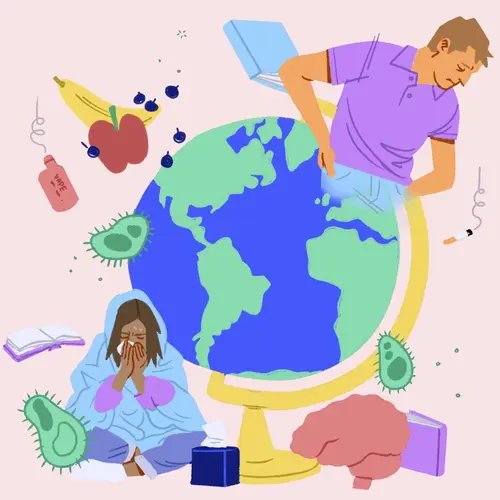Back pain is one of the most common problems you deal with as you age. About 80% of adults have it at some point. And more than 25% of adults say they’ve had it in the past 3 months.
But how do you know if your back pain is bad enough to see a doctor? Call them right away if:
- Your back pain is from a new injury.
- It comes with a fever.
- You have bladder or bowel problems because of it.
- It’s severe and doesn’t get better after rest.
- It spreads down your legs or causes numbness and tingling in your legs.
- You lose weight because of it.
It’s also worth telling your doctor if you’re over 50 and:
- Haven’t had back pain before
- Have a history of cancer or osteoporosis
- Use drugs and alcohol a lot
If none of these things applies, you can try to manage your pain at home with:
Rest
Most experts agree that prolonged bed rest is associated with a longer recovery period. Further, people on bed rest are more likely to develop depression, blood clots in the legs, and decreased muscle tone. Very few experts recommend more than a 48-hour period of decreased activity or bed rest. In other words, get up and get moving to the extent you can unless your doctor tells you otherwise.
Sleeping with a pillow between the knees while lying on one side may increase comfort. Some doctors recommend lying on your back with a pillow under your knees.
Cold and Heat
Some people seem to benefit from the use of ice or heat. Reach for ice first. Cold compresses, ice packs, or a pack of frozen vegetables from the freezer can ease swelling and numb the area. After about 48 hours, switch to a heating pad or hot water bottle. Heat will relax your back muscles and help blood flow to make you feel better. Ease up on the heat after a week -- it probably won’t help much after that.
Exercise
General recommendations are to resume normal, or near normal, activity as soon as possible.
There are no specific back exercises that have been shown to improve pain or increase functional ability in people with acute back pain. Exercise, however, may be useful for people with chronic back pain to help them return to normal activities and work.
Ask your doctor or physical therapist what kind of exercises you can do. Try low-impact activities like biking or swimming. Yoga is another option. Studies show that it can ease long-term and short-term back pain.
Medicines
Nonprescription medications may provide relief from pain:
- Ibuprofen (such as Advil or Motrin), available over-the-counter, is an excellent medication for the short-term treatment of low back pain. Because of the risk of ulcers and gastrointestinal bleeding, talk with your doctor about using this medication.
- Acetaminophen (such as Tylenol) and naproxen sodium (Aleve) are also effective in relieving pain. Always take them as directed. If your pain doesn’t go away with OTC drugs after 10 days, ask your doctor if they recommend prescription meds.
You can also buy sprays and creams to dull pain. These topical remedies make your skin feel hot or cold to mask the back pain beneath.
Mindfulness and Meditation
Relaxation practices like mindfulness and meditation don’t just give your body a chance to be still, but they help your brain deal with pain better. These exercises train you to focus on your breath. They can also rewire your mind so that pain doesn’t affect you the same way. Meditation can ease stress levels and inflammation, too.

